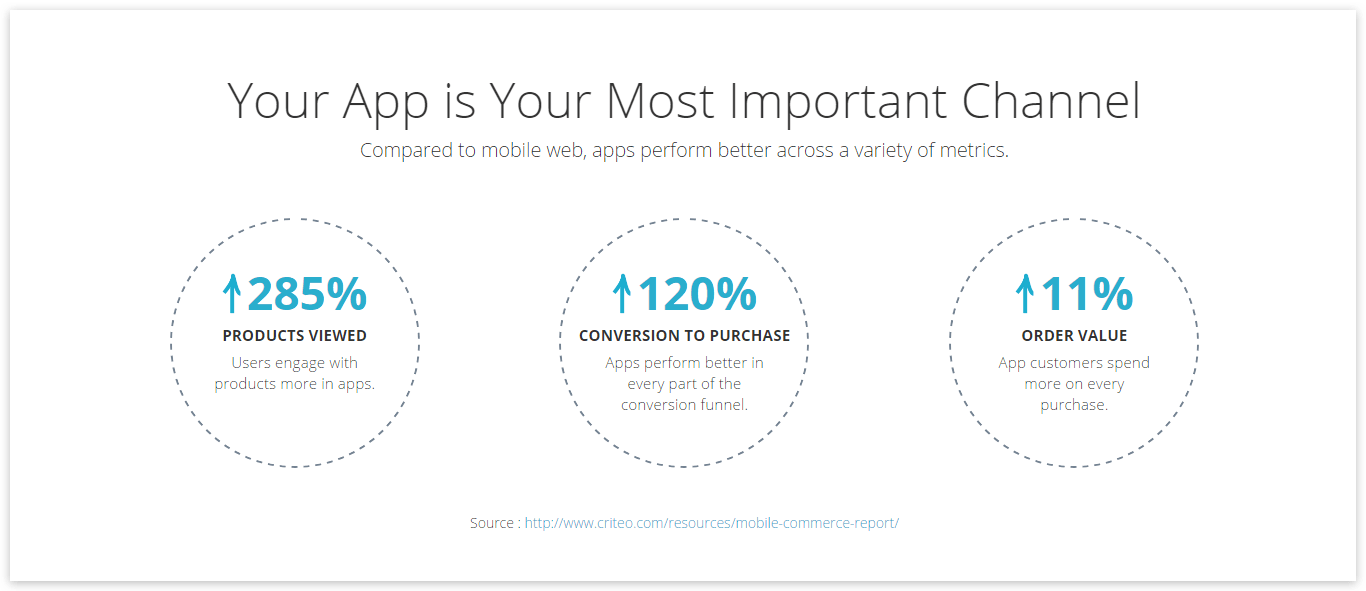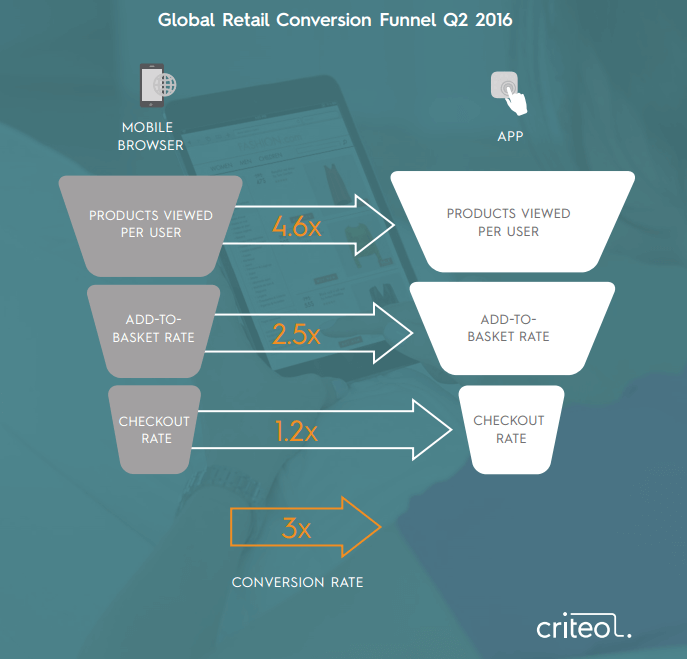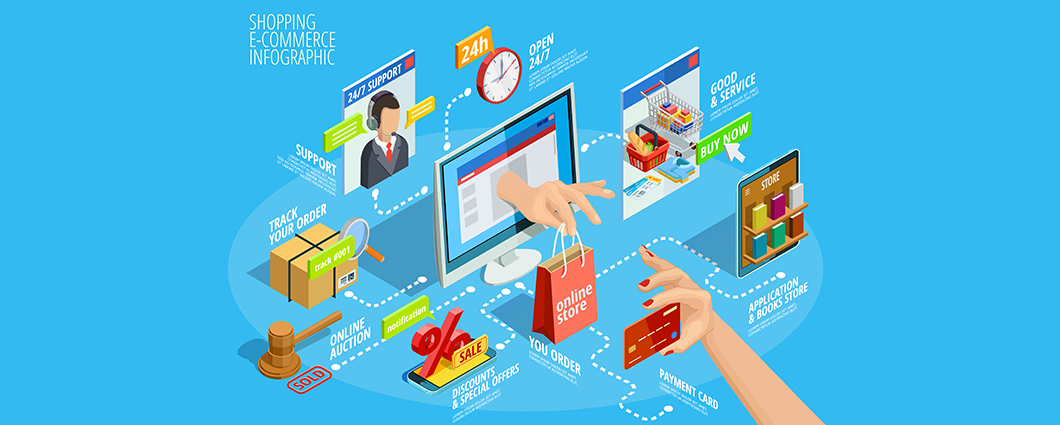Reaching out to your customer through the gadget
While desktops and laptops are usually reserved for work and video games these days, a smartphone or a tablet accompany a person everywhere like a key ring or a wallet, letting them stay connected to the world all the time. According to the research carried out by comScore, in the period of March 2014 — March 2015, the amount of mobile device users exceeded the number of hardcore desktop adherents.
A strong psychological link is formed between the gadget and its owner.
Due to the global spread of mobile technologies and wireless Internet, the average consumer feels like they should be able to buy things as easily as making a few quick taps on a touchscreen. The OuterBox eCommerce website development studio shared the results of studying online purchases in the U.S.: out of 125 million
An advertising agency called Criterio compared American eCommerce statistics for the second quarter of 2015 and 2016. Bottom line: there’s a stable growth in mobile transactions in areas like fashion and luxury goods,
Amazon predicts that in 2018 the profit made by mobile traffic in eCommerce will reach 669 billion, i.e., 45% of the entire market revenue. The market is enormous and is going to grow even further, so it’s essential that companies dabbling in eCommerce are reminded of the utility and value that mobile apps bring. The future of those who (whether consciously or not) neglects to tap into this source is predictable: they’ll be edged out by more adventurous and
A mobile website or a mobile app?
The right answer is both.
Let’s say your user is familiar with the desktop version of your website, but is horrified by the way it looks in the smartphone browser: paragraphs of text overlap and drown out images, or the page is so tiny it has to be pinched in, or the fields for entering personal data don’t work. Of course, if you commission a website (and want to take care of your consumers), you probably ask for adaptive layout. A large number of modern studies show that in online stores the share of mobile traffic is already between 30 and 60% and is growing rapidly. So if your store has a website, it should have a mobile version. Or maybe a special version for tablets, because people use them quite differently from desktops.
However, when it comes to eCommerce, even a decent mobile website is not enough for two main interrelated reasons. First, using a mobile app is simply more comfortable than using a website; second, without an app the owner of the business loses a portion of customers, missing out on potential profit that will be snatched up by more
As usual, numbers speak for themselves. According to infographics made by Branch that cite Criterio’s research, apps beat mobile websites
- 285% more products are viewed in apps;
- visits convert to purchases 120% more often, and performance in every part of the conversion funnel is better;
- the average order check is 11% bigger.

The victories that mobile apps bring
Conversion rate
According to a study carried out by Amazon, a mere 1% increase of conversion rate (one of the most popular metrics in eCommerce) brings in thousands of dollars. Criterio’s infographics demonstrate that on every single stage of the conversion funnel from product browsing to checkout, the amount of customers held in the app is significantly higher than in the website browser.

Returning customers
If your business presents itself through mobile apps, you can expect your
Average purchase value
Apparently, customers spend more when using apps. According to Criterio, by the second quarter of 2016, the price of an average purchase reached 127 $, which outdoes the average desktop value by a solid 36 $.
Push notifications
Push notifications have became an essential tool for informing customers about everything that happens to your brand. Offers are being launched,
Native payments
With the introduction of Apple Pay and Android Pay, there is less and less incentive to use your plastic card, let alone cash. The payment can be deducted from your card’s «digital double» that doesn’t disclose the original card’s data, making purchases quick and safe.
Mobile Deep Linking
Thanks to Deep Linking technology, your marketing can become stronger than ever. When you want to inform your customers about new offers and send out SMS and
Social network and messenger integration
People enjoy showing off in social networks, demonstrating their new clothes, vacation spots or how and where they spend their time. By outfitting your app with buttons that allow sharing on popular apps, you can make your loyal customers reel in their friends that don’t know you yet.
The British shopping app Mallzee was rather ingenious in taking advantage of people’s tendency to ask for their friends’ and family’s advice before buying. Mallzee let its users share the article they liked in WhatsApp and then follow the chat’s reactions and decide whether to purchase or not judging by the amount of likes or dislikes.
Conclusion
To stay competitive, your business must not only have a website that supports all popular mobile browsers, operating systems and their versions, but also a proper mobile app, because:
- App users are more easily involved in transactions and seem to be more eager to part with their money;
- The decision to buy can be influenced with the help of
well-timed push notifications, best of all — personalized; - Android Pay and Apple Pay almost nullify the risk of unauthorized access to your customers’ bank cards.
Live Typing’s portfolio includes both adaptive websites and mobile apps. Since 2014 Live Typing specialized in development of mobile apps for large eCommerce projects. In 2016 we designed and developed (and still developing) an app for purchasing ILE DE BEAUTE cosmetics and perfumes, and in 2016 it won a prize in the «Best Women’s App» nomination in a Russian contest called Golden App. We are always eager to bring interesting eCommerce projects to life and guarantee that we always see our projects through all the necessary stages, from prototyping to marketing and support. The initial consultation is free, so if you’re interested, don’t hesitate to contact us.






